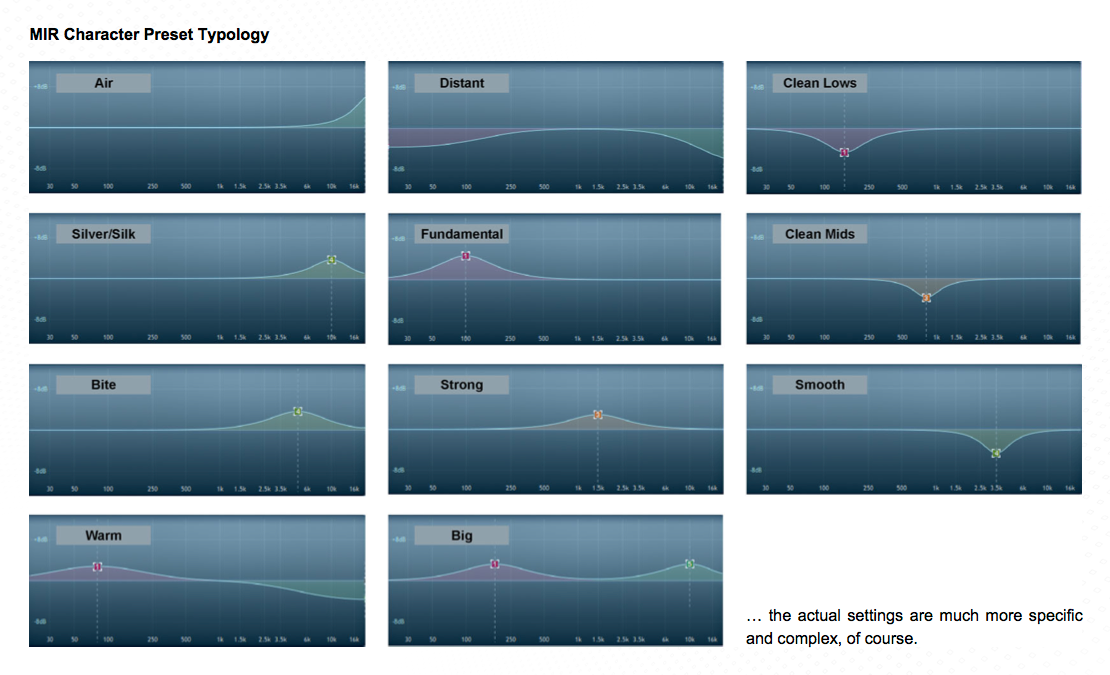Alright, reading through some old posts on this forum...I think I have come to the following understanding about the mir-positioned dry signal (please correct errors):
- Its been stated that the dry signal should be thought of like a close spot mic. In the real world, a close mic does not have distance information in the signal, nor panning, etc.. so its a bit different then a close mic in that regard I think?
- If Air absorption is checked, then a hi shelf EQ will be applied to the dry signal to simulate the air dampening some high frequency, increasingly based on distance to the main mic.
- If distance dependent scaling is checked, then distance from the main mic determines the level also, for sure to the dry signal, not sure if this effects the wet level also, I think maybe so, the IR's will pick up the sound from the instrument, based on the instrument profile and directivity profile and its position in the room will matter a lot in terms of what ends up at the main mic.
- If directivity filtering is on, then the direction of the player's nose can effect many aspects of the sound (how the sound will be effected exactly is unknown to us other then through trial and error), including level and maybe EQ? The directivity profile is always effecting the wet signal, but it only effects the dry signal if this box is checked.
- Each instrument can have a character profile that applies some factory black-box EQ...the exact curves unknown to us. The character profile uses the instrument profile in some way, and does lots of "magic stuff".
- Dry/wet slider for each instrument adjusts the level of the close spot mic dry signal, which also happens to have some of the other elements mentioned above, which infer distance from the main mic, even though a real world close mic would not have that distance information. The wet signal includes the entire room, and stuff like air absorption, directivity, etc..would inherently be in the room IR's, which the wet/dry slider can be used to suit taste.
So more questions..
- is LR panning contained in the mir-positioned dry signal (unlike a real world close mic) or is it expected that we pan the channel in the mixer (like we would with a real world close mic)
- In Mike Verta's masterclass on orchestral in the box mixing, he talks about needing a low-shelf also to emulate distance from the main mic. Mike Verta in his videos did an example with and without this rolloff, feeding into a typical convolution reverb. The one without the low shelf sounded like a PA speaker at the end of the hall and the one with the shelf sounded more natural. His claim is that with increased distance, some low frequency is lost over distance. So if you're trying to place some instruments back in the mix, in terms of depth or distance from the audience, then using a low-shelf seems to be his solution. In his videos where he demonstrated with and without that low-shelf, the differerence was very clear to me. What does MIR do in this regard? I notice there is a black-box "Distance" character profile, which might be doing that with "magic", but its unclear. Also does the icon distance from the main mic effect how much the low end would be rolled off (less proximity effect). What can you say about this topic or how MirPro handles it in the dry signal? The wet signal will presumably have that taken care of by the IR's.
That's all I have for now. My conclusion is that the mir-postitioned dry signal is not really emulating a real world close spot mic. I understand why you're kind of thinking about it that way, but since there is the possibility to pan it, air absorb it, distance scale it, directivity filter it...and possibly the low end is being shelved off based on the icon position too, I'm not sure.. well then its not really a close mic after all...other then the time alignment that is being done to make sure we don't have phasing problems. Am I understanding correctly at this point?
